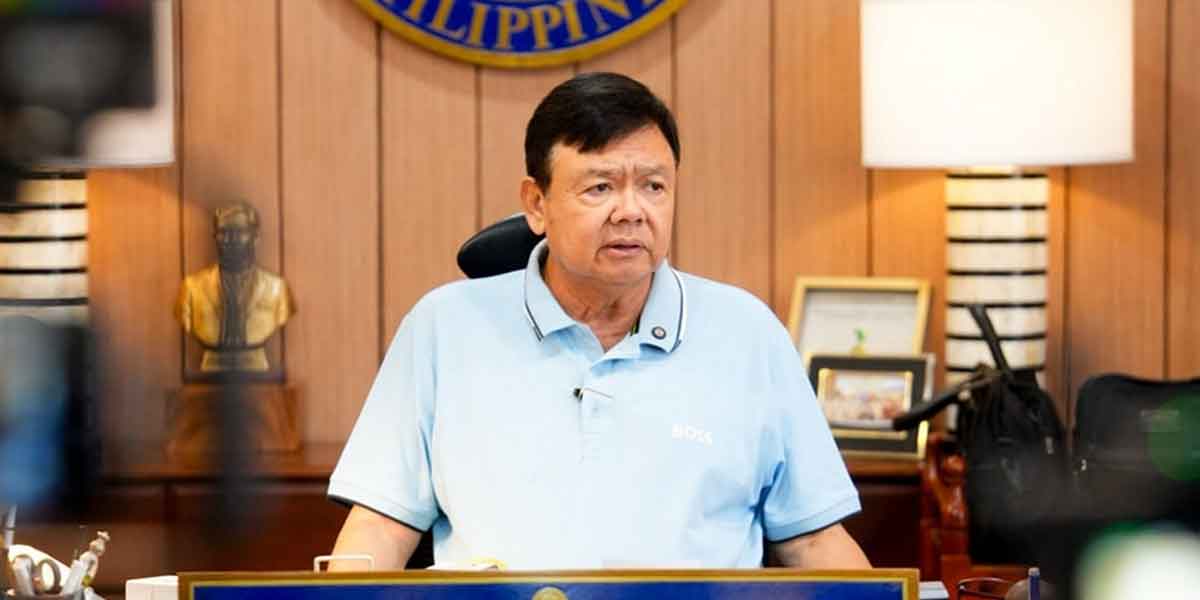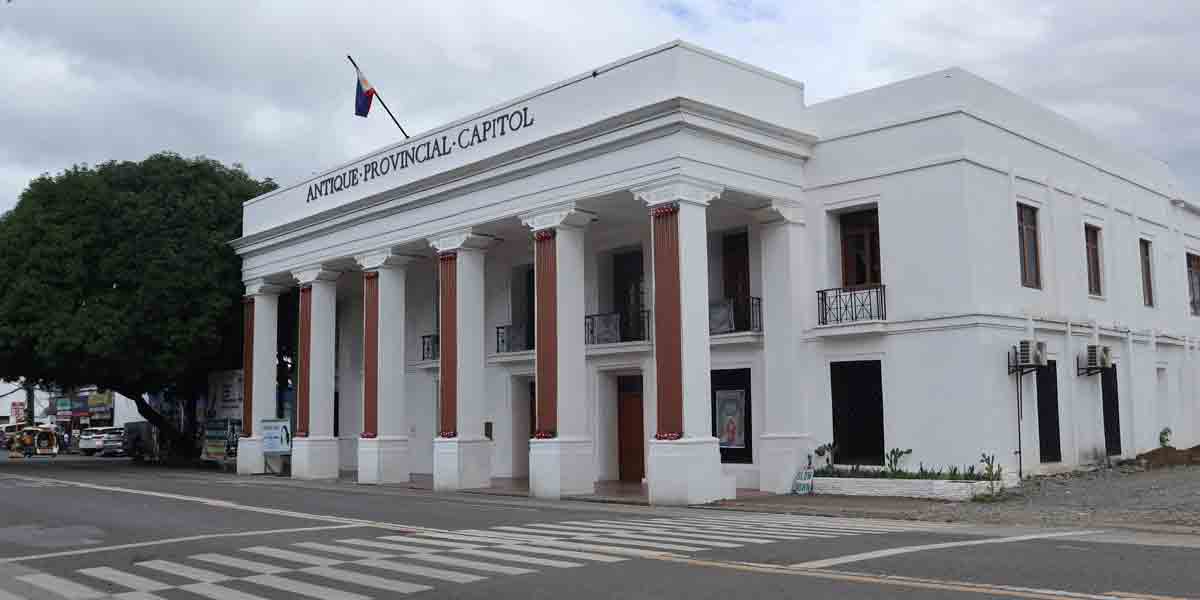
By Elyssa Lopez
Philippine Center for Investigative Journalism
With no hard net-zero emission commitments, can regulators push a shift to renewable energy?
“With the appointment of chairperson Mona (Dimalanta), you have a new brand of ERC: ERC with balls.”
That’s how Sen. Sherwin Gatchalian, vice chair of the Senate Committee on Energy, described the power sector regulatory agency at an industry event in November 2022. “To call for energy democracy, that takes balls,” he said.
His quip drew applause – and laughs – from an audience full of stakeholders in the renewable energy industry. Dimalanta, head of the Energy Regulatory Commission (ERC), had just finished her speech where she called for “energy democracy.”
“How do we see a regulator’s role in an electric power industry that is undeniably in transition? The ultimate goal – the holy grail – is not just to [ensure] affordability of [energy] but energy democracy,” she said at the same industry event.
“Energy democracy” is a term that has been widely and historically used by advocates of renewable energy (RE).
The Climate Justice Alliance, a global coalition of 84 communities and organizations that call for a “just transition,” defines energy democracy as a shift from the corporate, centralized fossil fuel economy to one that is “governed by communities, is designed on the principle of no harm to the environment, supports local economies, and contributes to the health and well-being for all peoples.”
While Dimalanta did not exactly use this definition in her speech, there were shades of it. The ERC chair said her agency would work to provide more choices to power consumers.
“Energy democracy is about access to energy… part of it is ensuring energy security, that there’s [enough energy] capacity so that consumers can effectively choose where to source power,” Dimalanta said in a separate interview with the Philippine Center for Investigative Journalism (PCIJ).
“Because if we don’t have enough supply, if we don’t have enough capacity, then we’re curtailing whatever power customers have. And if we only have three sources of energy, for example, is that really giving consumers a choice?”
The challenge then is to expand the country’s energy supply pool by tapping resources it already has: renewable energy.
“Because our main natural resource is not coal, while we have petroleum in [the] form of natural gas, it’s depleting… Our main natural resources [that] can be converted into power, into electrical use, are renewable energy sources,” Dimalanta said.
She echoed what Energy Secretary Rafael “Popo” Lotilla said in his first press conference under the Marcos Jr. administration: the country’s energy supply must move away from imported energy sources and focus on “indigenous energy sources.”
Lotilla said that as of 2020, 56.8% of power plants used imported fuel as opposed to 43.2% that used domestic or indigenous sources. The latter included natural gas.
“The longer-term solution [for our energy insecurity] is to move away from overdependence on imported sources and to go for indigenous sources. If we can have a hybrid [power system], more renewables… the cost [of energy] can be more affordable and more accessible to our people,” Lotilla said in August.
Mylene Capongcol, director of the Renewable Energy Management Bureau (REMB) under the Department of Energy (DOE), said the supply crunch and inflation caused by the Covid-19 pandemic and Russia’s invasion of Ukraine raised the need to develop indigenous energy sources.
“[These events] really manifested that it’s better to have your own [energy] resource developed than importing your fuel sources. It shows that renewable energy and other indigenous energy sources like natural gas can help mitigate the price,” she said.
These pronouncements are a departure from the previous administration’s “technology-neutral” stance on energy supply development. While the Duterte administration eventually abandoned this policy with the moratorium on new coal plant permits in 2020, it saw fossil-fuel-run power plants increase generating capacities.
Stakeholders interviewed by PCIJ were optimistic renewable energy policies and targets would gain ground under the Marcos Jr. administration.
Gerry Arances, executive director of the Center for Energy, Ecology, and Development (CEED), said economic conditions were favorable.
“Mas mataas ang impetus ngayon (There’s more impetus) for RE investments,” Arances said. “And recent decisions (of the DOE and ERC) are all market signals.”
ERC vs SMC
One of the issues that tested the ERC and DOE’s resolve to reduce the importance of coal was the joint rate hike petition of Manila Electric Co. (Meralco) and power supplier San Miguel Corp. for a temporary hike in prices, which was rejected by regulators as it violated their 10-year power supply agreements (PSAs) signed in 2019.
Meralco, the country’s biggest power distribution utility, and two subsidiaries of San Miguel’s power arm – San Miguel Energy Corp., which operates the Ilijan power plant, and the South Premiere Power Corp., which operates the Sual plant – claimed that increases in global fuel and coal prices had led to “significant losses.”
The Ilijan plant wanted to raise its generation rate to P5.10 per kilowatt-hour (kWh) from P4.30/kWh, while the Sual plant sought a hike to as much as P8.30/kWh from P4.30/kWh. Meralco contracted 670 megawatts (MW) and 300 MW from the Ilijan and Sual plants, respectively.
In denying the motion, the ERC said the fixed price nature of the PSAs was intended to act as “natural barrier” to protect consumers from external threats such as market volatilities.
“The fact that the PSA is financial in nature provided Meralco and its consumers the assurance that any fuel supply risk was of no moment and was assumed in full by the supplier,” the ERC said in its October 2022 decision.
The following month, San Miguel secured a temporary restraining order from the Court of Appeals on the ERC ruling.
Sam Reynolds, an energy finance analyst with the Institute for Energy Economics and Financial Analysis (IEEFA), said that regardless of the stay order, the ERC decision was a signal to distribution utilities to be more careful in negotiating their PSAs with power suppliers.
“I think what we saw was the ERC preventing a very slippery slope for fossil-fuel developers to continue to renegotiate contractually obligated prices. And so I think in the grand scheme of things, the ERC made the right choice,” he said.
The decision also provided a more level playing field, he said, between renewable-energy players and fossil-fuel power developers, as the latter would now be forced to reflect volatile fuel prices in their bid prices for PSAs.
Distribution utilities and electric cooperatives are required to hold an auction such as a competitive selection process before locking into a PSA with generation companies as part of a policy introduced by the previous administration in 2018. The process was meant to ensure that utilities purchased electricity at the “least cost.”
But power generation companies have either historically been granted price adjustments due to “force majeure instances” or have applied “fuel cost pass-through” provisions in PSAs, effectively hiking generation prices.
“The problem [with our energy supply] is not just the [lack or availability of] power plants, it’s the procurement [process] of the distribution utilities and also the connections to the grid. So what we need is a real systems approach,” said Albert Dalusung III, energy consultant of the Institute for Climate and Sustainable Cities.
“And I’m optimistic both Mona (Dimalanta) and Secretary Lotilla can work together [to do that].”
New policies introduced
Under the Marcos administration, DOE and ERC policies have indicated a preference for indigenous energy sources.
In October 2022, the DOE issued a circular declaring renewable energy resources as “preferential dispatch generating units” in the Wholesale Electricity Spot Market (WESM), the trading platform for power producers and distribution utilities.
This gave utilities that buy power from the spot market a higher chance of procuring renewable energy resources, which are cheaper than fossil-fuel-run power plants.
Weeks earlier, the agency increased the compliance requirement of distribution utilities in the renewable portfolio standards (RPS) program. Previously, the RPS program mandated on-grid power suppliers to increase the share of renewable energy sources in their power mix by 1% on an annual basis from 2020 to 2030. The DOE has since increased this requirement to 2.52%.
In November 2022, the DOE amended the rules and regulations of the RE law to lift foreign ownership limitations on renewable energy projects.
Renewable energy producers had been calling for more liberal ownership rules, arguing that foreign suppliers possessed more experience and advanced technology.
“The recent changes in policy will be a big boost in helping to really start that learning curve for the Philippines to encourage more price discovery of renewables and hopefully, to speed up or accelerate the transition to cheaper forms of energy,” Reynolds said.
Capongcol of the REMB said new policies signaled that the country was “open for business” for renewable energy development.
Based on the Philippine Energy Plan (PEP) 2020 to 2040, about P25 billion in investments would be needed in the renewable energy sector for the country to achieve its goal of increasing renewable power generation to 35% by 2030.
Both Capongcol and Dimalanta said the National Renewable Energy Program (NREP), the basis of the targets in the PEP, was being updated.
“When the earlier plan was created, the prices we considered for RE technology were based on 2018 prices… imagine what it is now. They have generally decreased,” said Dimalanta, who also chaired the National Renewable Energy Board. “So there’s really a chance it can change.”
Regulators also want the public to have a key role in diversifying the country’s energy supply mix.
Updated rules on Distributed Energy Resources (DER) published in November by the ERC effectively allow industrial consumers, like manufacturers, which may need capacity of up to 1 MW, to build their own power supply. They also have the option to sell at least 30% of their excess energy to distribution utilities.
Aside from commercial power generators, distribution utilities may soon tap supply from individual customers.
“In the future, the share in the [power supply] mix may already include the voluntary programs, like people choosing to have solar panels [through net metering], or manufacturers choosing to contract from renewable energy plants,” Dimalanta said.
Regulator finally fines NGCP
There’s still one huge hurdle for renewable energy producers: access to the power grid that links power generation to distribution utilities like Meralco.
“Like in any other jurisdiction, grid integration is a problem,” the REMB’s Capongcol said. “There are delays [in interconnection projects and processing of permits] and we are still thinking of solutions on how to unlock that barrier,” she said.
The ERC has already tightened regulation on the National Grid Corporation of the Philippines (NGCP), the country’s private transmission operator, to force it to shape up. NGCP is owned by a consortium composed of State Grid Corp. of China (40%), Monte Oro Grid Corp. (30%) and Calaca High Power Corp. It is co-chaired by Robert Coyiuto Jr., owner of Prudential Insurance, and Henry Sy Jr., who also serves as chairman of SM Investments.
In November, ERC slapped a P5.1-million fine against the grid company for failing to follow the government procedure in procuring ancillary services, energy reserves that help NGCP maintain the reliability of the grid. As the transmission operator, it is tasked to procure energy that it can tap in case the capacities of power generators unexpectedly drop.
In its decision, the ERC warned the NGCP that non-compliance might result in the cancellation of its Certificate of Public Convenience and Necessity. Regulators also warned the grid operator that they could endorse to Congress the revocation of its legislative franchise.
The PCIJ has not seen any record of the NGCP being fined by the ERC, then under Chairperson Agnes Devanadera, from 2016 until June 2022, despite delays in interconnection projects and the procurement of ancillary services.
Dimalanta said the NGCP had finally paid the fine, despite the company’s earlier declarations that it would file an appeal against it.
“Even if we continue to impose penalties upon penalties, it does not make our system any better. It doesn’t make our grid more reliable. What we want is for them to do the projects that they need to do, at the time that they have committed to do them so that we can have a more reliable grid,” she said.
Greater awareness of RE mechanisms needed
Another roadblock is the tedious licensing process, including those for incentive schemes for consumers.
For instance, establishing a power plant in the country needed “at least 200 signatures,” said former energy undersecretary Jay Layug.
Capongcol admitted that government agencies needed more guidance as far as the permitting process for renewable producers was concerned. Voluntary mechanisms also need to be amplified so qualified users can avail themselves of incentives.
The net metering program, which allows consumers to install solar panels with up to 100 kilowatts (kW) capacity for their own use, for example, has drawn only 7,365 users. The program has been in place since 2012. Dimalanta said “it’s a sad number.”
The Green Energy Option Program (GEOP), which allows smaller industrial consumers to source all their electricity supply directly from renewable sources if they have a peak demand of 100 kW or greater in the past 12 months, only has “100+” customers, said Capongcol.
Capongcol admitted the process to apply for the GEOP remained “tedious.”
“It takes three to six months,” she said. “We need to make it shorter.”
Capongcol said the DOE and the ERC were working to simplify processes for the GEOP and the net metering program. A communication plan to engage the intended audience of these programs was also in the works, she said.
Bigger climate ambitions pushed
What could push a larger-scale adoption of renewable energy is a stronger commitment from the government to reduce greenhouse gas emissions, industry stakeholders said.
Among member states of the Association of Southeast Asian Nations (Asean), for example, the Philippines is the only country that has not firmed up a “net-zero” goal under the 2015 Paris climate accord. Net-zero means bringing down greenhouse gas emissions to zero.
Based on nationally determined contributions or NDC under the Paris agreement as of April 2021, the Philippines is only targeting to cut greenhouse gas emissions by 75% by 2030.
“The next step now for wider adoption of renewable energy is maybe another policy that raises the [GHG emissions reduction] ambition further, specifically the [renewable energy share] target,” Arances of CEED said.
Bigger commitments to the climate accord can also serve as a guiding post for the country’s policies on other energy technologies like nuclear and liquified natural gas, he said.
Analysis by the nonprofit science think tank Climate Tracker showed that the country’s renewables could be scaled up to 81% of the country’s energy generation capacity by as soon as 2030, 96% by 2040, and 100% by 2050. Such a pathway involves decarbonization efforts of industries, which calls for energy efficiency improvements, the think tank said.
In its 2021 NDC, the Philippines stated that the realization of its targets would require financing from the international community.
The financing requirement could be daunting. But Reynolds of IEEFA argued that hard commitments on net zero emissions might actually boost investor confidence.
“There need to be softer political commitments, and there need to be hard commitments in the international arena towards net zero,” he said.
“That’s going to give a strong signal to investors, as the Philippines can say: Look, there’s really minimal risk that this (RE) project is going to stop seeing returns. We already have [a] long-term commitment towards net zero.” –With research by Martha Teodoro, PCIJ, March 2023





















